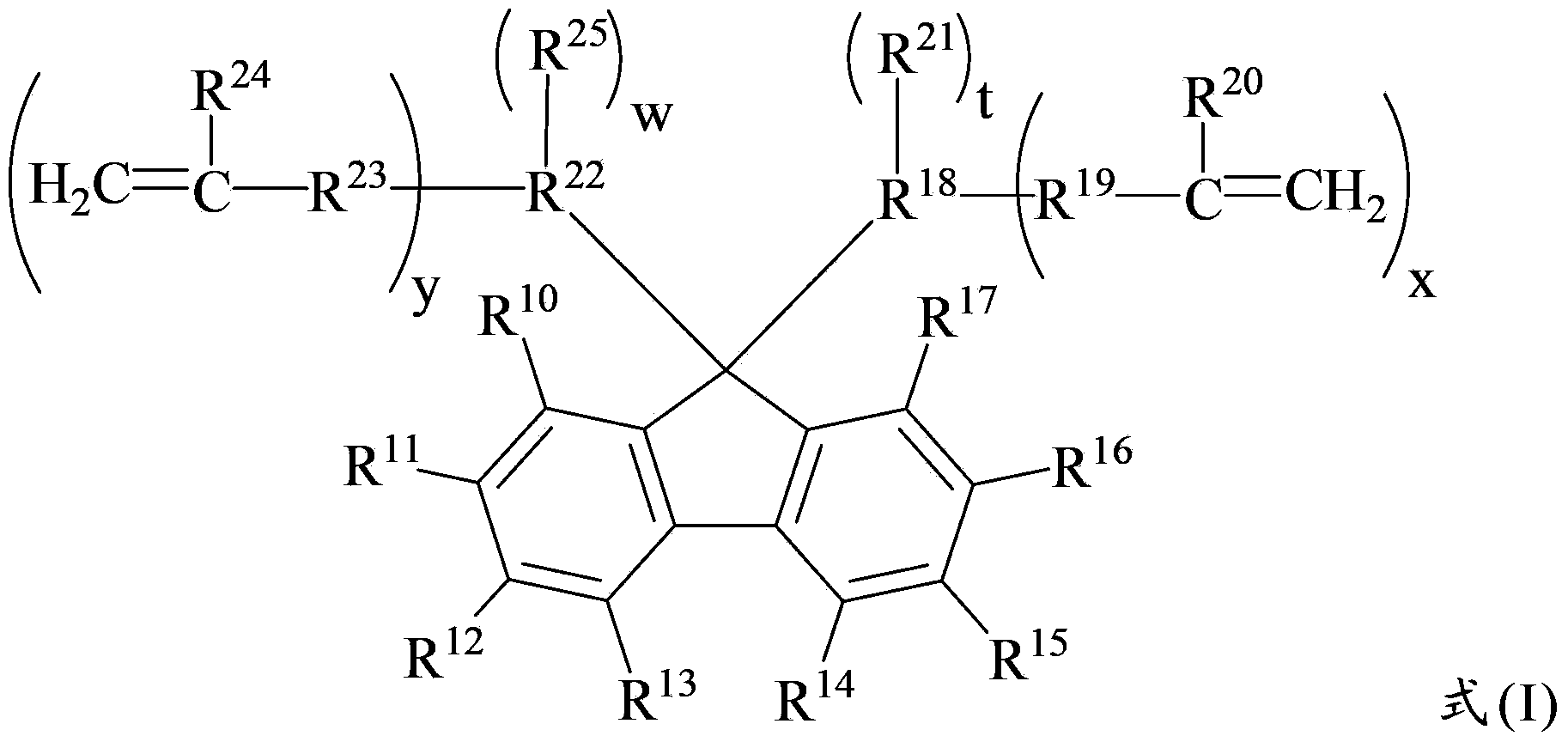Photo-curing polysiloxane composition, protecting film and element containing said protecting film
A polysiloxane and composition technology, which is applied to photosensitive materials, optics, and optomechanical equipment for optomechanical equipment, etc., can solve the pattern damage of the hardened film, the poor chemical resistance of the hardened film, and the inability of the hardened film. Immediately carry out cleaning treatment and other problems to achieve the effect of improving chemical resistance and development resistance
- Summary
- Abstract
- Description
- Claims
- Application Information
AI Technical Summary
Problems solved by technology
Method used
Image
Examples
preparation example A-1
[0152] In a three-necked flask with a capacity of 500 ml, add 0.30 mole of methyltrimethoxysilane (hereinafter referred to as MTMS), 0.55 mole of phenyltrimethoxysilane (hereinafter referred to as PTMS), 0.10 mole of vinyltrimethoxy Silane (hereinafter referred to as VTMS), 0.05 moles of "GF-20" and 200 grams of propylene glycol monoethyl ether (hereinafter referred to as PGEE), and while stirring at room temperature, add oxalic acid aqueous solution (0.40 grams of oxalic acid / 75 grams of H 2 O). Next, immerse the flask in a 30°C oil bath and stir for 30 minutes, then raise the temperature of the oil bath to 120°C within 30 minutes, and when the internal temperature of the solution reaches 105°C, continue heating and stirring for polycondensation for 6 hours , and then remove the solvent by distillation to obtain a polysiloxane polymer (A-1) having an anhydride group and an alkenyl group.
preparation example A-2
[0154] In a three-necked flask with a volume of 500 ml, add 0.60 mole of MTMS, 0.30 mole of phenyltriethoxysilane (hereinafter referred to as PTES), 0.05 mole of 3-acryloyloxypropyltrimethoxysilane (hereinafter referred to as AAP-TMS for short), 0.04 moles of "TMSOX-D", 0.01 moles of "DMS-S27" and 200 grams of PGEE, and added oxalic acid aqueous solution (0.45 grams of oxalic acid / 75gH 2 O). Next, immerse the flask in a 30°C oil bath and stir for 30 minutes, then raise the temperature of the oil bath to 120°C within 30 minutes, and when the internal temperature of the solution reaches 110°C, continue heating and stirring for polycondensation for 6 hours , and then remove the solvent by distillation to obtain a polysiloxane polymer (A-2) having epoxy groups and alkenyl groups.
preparation example A-3
[0156] In a three-necked flask with a capacity of 500 ml, add 0.60 moles of dimethyldimethoxysilane (hereinafter referred to as DMDMS), 0.30 moles of PTMS, 0.10 moles of 3-methacryloxypropyltrimethoxy Silane (hereinafter referred to as MAPP-TMS), 100 grams of PGEE, and 100 grams of 4-hydroxy-4-methyl-2-pentanone (hereinafter referred to as DAA), and add oxalic acid within 30 minutes while stirring at room temperature Aqueous solution (0.35 g oxalic acid / 75 g H 2 O). Next, immerse the flask in a 30°C oil bath and stir for 30 minutes, then raise the temperature of the oil bath to 120°C within 30 minutes, and when the internal temperature of the solution reaches 105°C, continue heating and stirring for polycondensation for 6 hours , and then remove the solvent by distillation to obtain polysiloxane macromolecule (A-3) with alkenyl groups.
PUM
| Property | Measurement | Unit |
|---|---|---|
| particle size | aaaaa | aaaaa |
| particle diameter | aaaaa | aaaaa |
Abstract
Description
Claims
Application Information
 Login to View More
Login to View More - R&D
- Intellectual Property
- Life Sciences
- Materials
- Tech Scout
- Unparalleled Data Quality
- Higher Quality Content
- 60% Fewer Hallucinations
Browse by: Latest US Patents, China's latest patents, Technical Efficacy Thesaurus, Application Domain, Technology Topic, Popular Technical Reports.
© 2025 PatSnap. All rights reserved.Legal|Privacy policy|Modern Slavery Act Transparency Statement|Sitemap|About US| Contact US: help@patsnap.com



